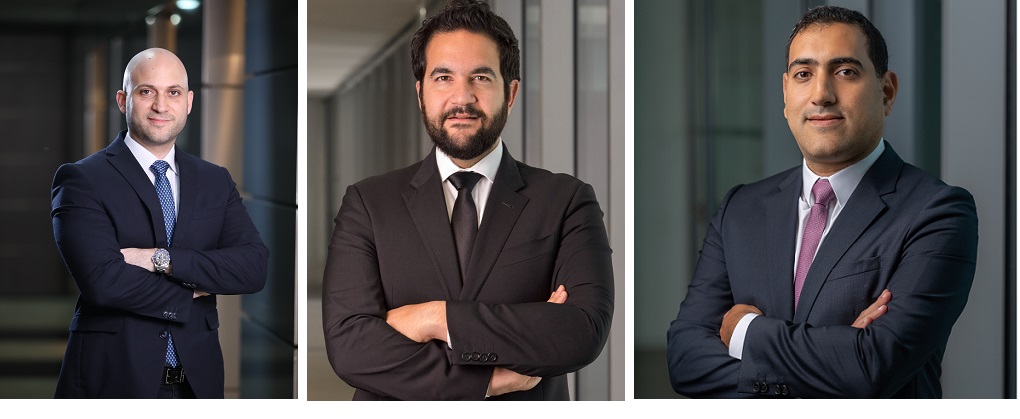MENA countries need to invest more than US$500 Billion in urban regeneration programs to unlock sustainable debt and inclusive economic development
- Report from Strategy& shows nearly one-third of the Arab world urban population lives in substandard conditions.
- In 2021, more than $1.6 trillion in sustainable debt was issued, 33 percent of which was tied to achieving ESG targets.
Dubai, UAE, July04, 2023:Countries across the Middle East and North Africa region must integrate environmental, social and governance (ESG) principles into their urban regeneration strategies to build inclusive economic development and preserve cultural heritage, according to the latest research by Strategy& Middle East, part of the PwC network.

The necessity for urban regeneration is seen across the region, with unplanned or so-called ‘informal settlements’ continuing their rapid growth: 40% of the populations of both Cairo and Makkah live in such settlements. Meanwhile, emissions from new construction activity and ongoing building operations represent 37% of energy-related emissions and 34% of global energy demand.
“As recently as 2018, roughly 31 percent of those in the Arab world living in cities did so in decaying neighborhoods and dwellings. Our analysis shows that it would cost the region US$500 billionto regenerate a sample of 15 densely populated cities – such as in Saudi Arabia, the UAE, Qatar, Egypt, Iraq, Syria, and Jordan. This injection of capital and urban planning has enormous potential totransform the livelihoods of millions of people, directly or indirectly,” said Karim Abdallah, Partner with Strategy& Middle East.
While economic growth delivers social and economic benefits, rapid and unplanned urbanization can create economic, environmental and social issues, from sprawl and decay, to displaced communities and neglected cultural and historical sites.
The Strategy& report points out that severalMiddle East urban regeneration efforts are already underway, notably Jeddah’s Al Balad district and downtown Sharjah in the UAE. However, these programsmust strike a balance between improvement without gentrification, meethousing demandswhile preservingneighborhood aesthetics,and enhancesocio-economic conditions while safeguardingtheirhistorical heritage and social fabric.
Unlike traditional development, urban regeneration must not only breathe new life into old districts thathelps improvequality of life and economic opportunity, but also be financially viable for the government agencies, developers andfinancial institutions sponsoring these projects.
An ESG-based strategy therefore can ensure that programs conform to growing demand for ESG compliance from investors and bankswhile opening up further investment and financing avenues.In 2021 alone, over $1.6 trillion in sustainable debt was issued, with a third of that specifically linked to ESG targets. Additionally, by reviving decaying districts, an ESG-based strategy canalso restore much-needed housing stock, commercial space and support with tourism development thatmany Middle East countries are seeking.
“When linked to ESG principles,urban regeneration acts as a powerful tool to mitigate the common challenges of regeneration. Whether we’re talking about better infrastructure, construction efficiencies or energy efficiency, sustainability is integral to the environmental goal,” commented Charly Nakhoul, Partner with Strategy& Middle East.
Several nations, including Bahrain, Saudi Arabia, and the UAE, have set out net-zero strategiesrecognizing the significance ofpreserving the social fabric and engaging with communities to maintain cohesive and healthy societies.
“Urban regeneration is integral to the effective management of the MENA region’s population growth,” said Fady Halim, Partner with Strategy& Middle East. “By implementing a ‘LIFE’ approach, whichintegrates ESG principles into urban regenerationprojects, a variety of sustainability, socio-economic, cultural and quality of life goals can be achieved. Theseoutcomes will have a lasting impact; includingproviding better life opportunities, fostering thriving communities, and creating financial incentives forcontinuous urban revival and development,” he added.
For GCC countries to achieve sustainable financing and inclusive socio-economic development, they must embed ESG principles in a series of L-I-F-E phases for urban regeneration.
- Learn (and listen): Projects must begin with a period of listening and learning from residents, businesspeople, and property owners. Sponsors must understand the area’s socio-economic, cultural, and historical characteristics and the community’s needs. Effective communication among all stakeholders is vital to ensure the project aligns within the context of the overallcity.
- Integrate:ESG principles must be seamlessly integratedinto every aspect of the project, from exploratory conversations and planning to design and implementation; and from ongoing operations to managing the assets over the long term.
- Fix: It is important to fix ESG targets and other key performance indicators that translate the commitment into a tangible, measurable effort.
- Earn:From these actions; stakeholders earn their rewards. Community members gain a higher quality of life, and the public and private-sector sponsors ultimately benefit from their investments.
For governments across the region, urban regeneration is a social and economic imperative – their national security depends on the maintenance of cohesive societies and empowered individuals. Moreover, urban regeneration projects can only deliver these outcomes if they integrate ESG principles built around transparency, fairness, integrity and inclusion. L-I-F-E phasescan provide policymakers and developers with a powerful roadmap to successful regeneration and towards building sustainable urban centers of the future.
ENDS
About Strategy&
Strategy& is a global strategy consulting business uniquely positioned to help deliver your best future: one that is built on differentiation from the inside out and tailored exactly to you. As part of PwC, we’re building the winning systems that are at the heart of growth every day. We combine our powerful foresight with this tangible know-how, technology, and scale to help you create a better, more transformative strategy from day one.
As the only at-scale strategy business that’s part of a global professional services network, we embed our strategy capabilities with frontline teams across PwC to show you where you need to go, the choices you’ll need to make to get there, and how to get it right.
The result is an authentic strategy process powerful enough to capture possibility while pragmatic enough to ensure effective delivery. It’s the strategy that gets an organization through today’s changes and drives results that redefine tomorrow. It’s the strategy that turns vision into reality. It’s strategy, made real.